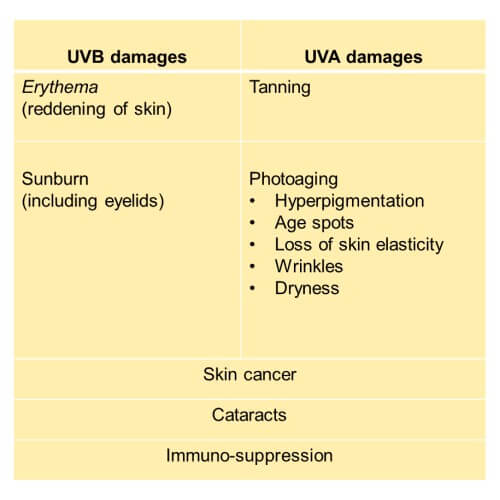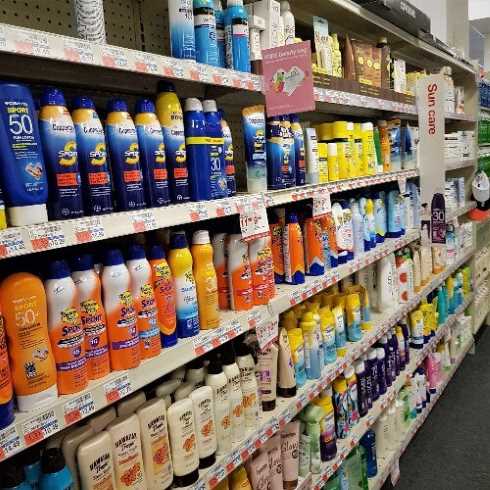The overwhelming impetus to write this blog came from a recent (socially distant and virtual) visit to Sephora’s USA website. I searched for “Best-selling” sunscreens and I was astounded that the bulk of the best-selling products were not standalone sunscreen products. Instead, these products were/are make-up products, compromising of:
- CC creams
- Foundations
- Primers
- Tinted and Day moisturisers

Source: Sephora USA websiteWas this trend behaviourial?
I scoured online chatrooms/groups, seeking from make-up users the answer to these two question:
- Did they think that the application of their foundation/CC cream provided them with sufficient SPF coverage?
- Were they using a separate standalone sunscreen on a daily basis?
The overwhelming number of responses were as follows:
- Yes
- No
What do I think?
I am frankly quite shocked because if you are even remotely into skincare, you must (in my mind) be using sunscreen on a daily basis, 365 days a year. On average, I will use at least 1/3 – 1/2 teaspoon of sunscreen on my face or a nickel sized dollop (Skin Cancer experts recommend this). My Ultrasun 50ml sunscreen lasts on average 1 – 2 months. If I use a make-up product instead of my sunscreen, then I have to use a nickel-sized dollop of foundation.
I cannot do that and I do not know of other women who can. Therefore, by default, if you are using make-up to replace your sunscreen, then you are not using SUFFICIENT QUANTITY OF sunscreen to protect your skin against the following:

Why is SUFFICIENT QUANTITY such a big deal?
This is an important and pertinent question: today’s blog answers why 2mg/cm2 or 1/2 tsp of sunscreen or a nickel-sized dollop is what skincare experts, including Skin Cancer organisations recommend you use. There are 2 reasons.
Reason 1: How SPF is calculated
SPF or Sun Protection Factor is defined as, “how much longer PROTECTED SKIN can be exposed to the lowest UV dose before reddening (erythema). Its calculated as the ratio of
(Time to produce erythema in protected skin)/(Time to produce erythema in unprotected skin)
E.g., if your skin without sun-protection reddens after 10 mins and with sunscreen reddens after 300 minutes, then the SPF =300/10 = 30. If a product is SPF 50, then this means only 1/50th of the UVR is not reaching your skin.
The SPF of sunscreens are measured under strict conditions in a lab and an important premise is the quantity of sunscreen applied is 2 mg/cm2
The SPF value ONLY holds if you apply the correct amount of sunscreen, which is bizarre because I haven’t met a single person who can eyeball 2 mg/cm2 correctly.
Therefore, it should come as no surprise that studies persistently show:
- People typically apply 0.5 to 1.5 mg/cm2 of sunscreen in real life instead of the 2 mg/cm2 dosage prescribed in SPF test.
- The cosmetic elegance of a sunscreen determines how much we apply. If a sunscreen is easier and less chalky and less gunky, people apply closer to the 2 mg/cm2 dose.
(An equivalent amount to 2 mg/cm2 for the face alone is:
- 1/2 to 1/3 teaspoon
- Nickel sized dollop)
Reason 2: why applying LESS sunscreen is a really bad idea
Its not rocket science that applying LESS sunscreen reduces the SPF protection. But here is what the scientists say:
We were able to demonstrate that there was a polynomial relationship between the SPF and the quantity of product on the skin’s surface.
It can be seen that when the dose (ie, 2 mg/cm2 is halved, the SPF is divided by a variable factor according to the product, from 1.5 to 3.8.
Couteau C et al, Influence on SPF of the quantity of sunscreen product applied Int J Pharm. 2012 Nov 1;437(1-2):250-2
In plain English…..Applying 50 per cent of 2mg/cm2 reduces SPF value in a non-linear manner.

As you can see SPF 15 very quickly becomes SPF 10 or SPF 4.
Closing remarks
If you regularly use (e.g.) the number bestselling Sephora foundation with SPF 50, it is statistically likely and probable, that you are applying LESS than the recommended amount.
That’s just common sense – you won’t apply more foundation then this is necessary and definitely not a nickel-sized dollop.
As a result, your SPF is not SPF 50.
Therefore, you must and should use a standalone sunscreen product.
*******
COPYRIGHT
I wish to remind some of you that I am a non-affiliated skincare blogger. I invest my time, money, blood, sweat, and tears in creating content for my blog. My blog is read in multiple countries and according to my lawyers, each of those countries protects my content and rights under copyright law. If you would like to use my content, do the right thing, and write to me at email@happyskindays.com. Don’t be that person who steals content, because it’s arrogant, disrespectful, and ultimately, a crime.
